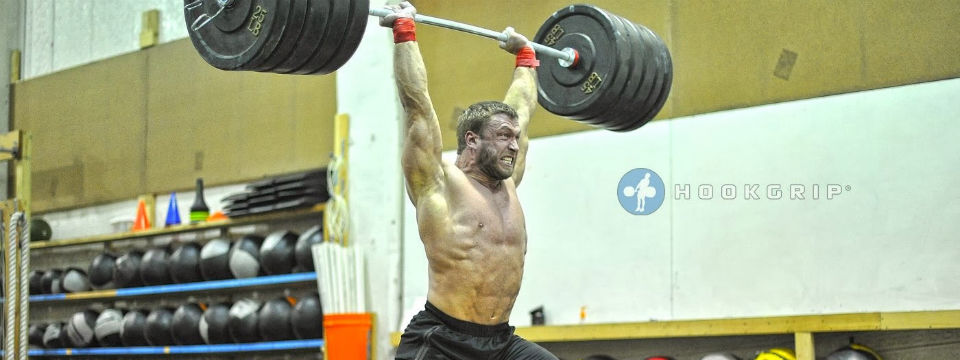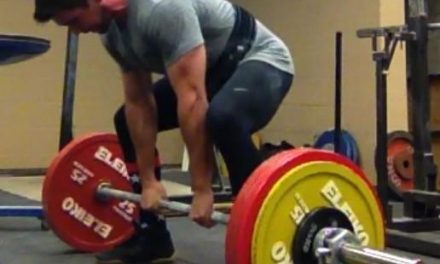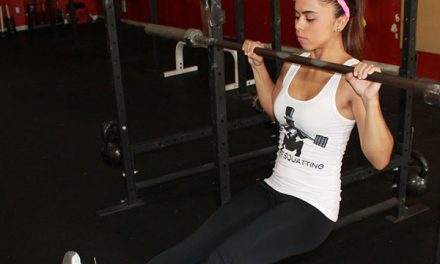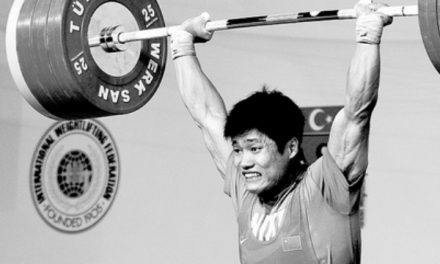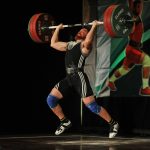This year has been quite busy for me but also a very fortunate one. I was able to attend three major Olympic weightlifting seminars: Glenn Pendlay Level 1 & 2, Jon North’s Catapult, and the Norwood Weightlifting seminar featuring Dmitry Klokov, Ilya Ilyin, and Vasiliy Polovnikov. These seminars not only expanded my knowledge on weightlifting technique, but also made me aware that there are many different styles of weightlifting with their own separate complexities rather than a single method used by all. Glenn Pendlay taught the American classical style which I was very comfortable with since it was the style I was originally trained in. Jon North had his version of the catapult which really threw me off but I really enjoyed the technique. The Russian technique taught by Klokov and the others was crazy different and went against a lot of what we in America are taught to do. This article compares and contrasts Pendlay vs North vs Klokov from the ground up from every seminar I attended this year.
*Disclaimer. Philosophies and schools of thought may have been different from before the seminar or changed afterward. I’m only describing what I was taught the day of the seminar.
The SETup
Pendlay: Shoulders are over the bar, slightly forward. Weight balanced mid-foot. Butt low to be in this position. Knees slightly forward.
North: Slightly behind the bar and actively leaning back, pulling the barbell into your leg. Weight balanced mid-foot. Knees slightly forward.
Klokov: Shoulders way in front of the barbell. Butt shouldn’t be too low. A dynamic start where the butt is low is okay, but pulling starts when your butt is higher and shoulders are way in front of the barbell. Almost to the point where you are purposely leaning forward. Weight balanced mid-foot. Knees should be nearly perpendicular to the floor.
The first pull
Pendlay: Knees begin to extend by moving backward. Hip and shoulder angle from the floor to the knee should be almost identical. Perform as fast as possible given you can hit the correct positions. Shoulders should be in front of the barbell at the knee, weight balanced on the heel.
North: Delay knees moving backward to allow for a faster speed immediately off the ground. Hips are still low and knees are just slightly forward by the time you reach the knee to prepare for a strong “Superman pull.”
Klokov: Elevation of the hips and shoulders is what brings the barbell up since the shins are pretty much vertical already. Shoulders will still remain over the barbell, however weight still needs to be balanced mid-foot.
The second pull
Pendlay: Chest will come back and knees will naturally begin to go forward via the “double knee bend.” Barbell will remain just barely above the skin but no contact made with the thigh. The second pull will take you to the power position before extension. The power position means knees are slightly forward and the torso is completely vertical. From here, an explosive triple extension will occur and you will aggressively pull under the bar as quickly as possible in the respective squat position (Clean- Front Squat, Snatch- Overhead Squat). Barbell will meet the hips and the explosive nature of this meeting will be audible. In the Clean, this is the very top of the thigh and in the Snatch it will be the crease of the hip.
North: This is where the Superman pull will begin. The knees will scoot back and you will aggressively keep the barbell close by pulling the barbell back with the lats (this is also done by Pendlay but more exaggerated here due to the body moving backward in the superman pull). During this pull your shoulders are still over the barbell. Right before the power position, chest will aggressively go back and perform the double-knee bend. I asked Jon if this pull was pretty much the classic 1st pull and 2nd pull all crammed in after the knee and he said, “Actually, yeah, I never thought of it that way.” After the power position you will do a catapult extension which isn’t exactly a triple extension. The most important part of a catapult extension is aggressive contact with the top of the thigh (clean), or hip (snatch) through explosive hip extension. Early arm bend is okay if it’s done on purpose to bring the barbell into the hip (example: Donny Shankle). Knee extension isn’t required, however, heels will elevate naturally. This extension also encourages leaning back to really push the hips through. Following this you will pull under the bar as quickly as possible.
Klokov: Knees do not go forward. Knees do NOT go forward. I was reminded this by every-single-one of them during the practical portion. Polovnikov actually got a little mad and held down my knees and made me finish the pull like this. When I asked them about the double-knee bend, they didn’t know what I was talking about and when I explained what I meant (I assumed poor translation) they said it doesn’t make any sense to have your knees go forward when you are trying to bring a barbell up. The goal of the Russian weightlifting system was to have the barbell remain as vertical as possible, rather than a sweeping pattern. You are still over the barbell until you extend vertically. A triple extension occurs, but a perfectly vertical extension, rather than any leaning back. The barbell will make contact for the Clean just a few inches above the knee, rather than the top of the thigh like in the Pendlay and North version. At the time of triple extension, you will also use the traps and shoulders to elevate the barbell vertically. The barbell’s contact will the body should be audible, or in the words of Klokov “More ZING!” They put a huge emphasis on trap and shoulder strength for the Olympic lifts. It’s very important to keep a vertical barbell path by having the hands remain under the elbow during the high pull (this was explained with a brutal drill). From here, pull under the barbell as fast as possible. This system was the most difficult to learn and goes pretty much against everything American coaches say. Shrug and no power position? Blasphemy. However, I can’t clean and jerk over 500lbs like these guys, so they must be doing something right.
On the squat
Pendlay is still big on using the Texas Method. Monday a volume day, Wednesday a recovery day, and Friday a rep max day. If the squat is still lacking, a more intense squat cycle such as Smolov can be implemented. Klokov says he squats when he wants, which is usually twice a week and will always go to max in either singles, doubles, or triples. Ilyin said he squats every training session, and doesn’t go over 280kg (616lbs) anymore (as if that’s light). Klokov and Polovnikov were both very adamant about keeping the knees aligned with the feet rather than excessively shoving the knees out. All camps agreed that you don’t really need to train the front squat unless it’s something that’s holding you back.
On programming
I don’t want to give away too much, but Pendlay’s programming seemed technique heavy. Every training session would be Snatch, C&J, Squat. The Russians said their training is roughly 10% technique/main movements, and 90% strength work since their form is pretty much mastered at this level. So beginners, this doesn’t apply to you. Actually, probably doesn’t apply to any of us. The Russians were big on the theory that muscles move weight. Most of their strength work includes complexes, pauses and deficits. A big reason they like pauses so much in training, such as at the knee or the dip before the jerk, is to “feel” the muscles they should be activating and that balance is correct over mid-foot.
Take away points
I could write pages upon pages about what I learned in these phenomenal seminars, however it’s best to just attend them yourselves to receive the hands on work and instant feedback. The Russian system is fairly different from the classic and catapult system and even though these are Olympic medalists, I don’t think I’ll be changing my form to theirs anytime soon. Jon North’s version of the catapult really took my lifting to the next level as of recently, so I think I’ll be going by the old rule “if it’s not broke, don’t fix it.” So then did I waste my money at the Klokov seminar? Absolutely not. What I wrote in this article is just comparing the basic principles of the Russian technique as taught by the seminar staff. This article is merely a sneak peek into any of these seminars. We learned more drills than I can fit on two hands, corrective exercises, programming and a ton of strength developing exercises.
Where I’m at now: Pendlay influenced my positions and speed under the bar. Jon North taught me how to have an aggressive extension. The Russians made me realize how weak I am and how to get stronger.
If you ever have a chance to attend any of these seminars, I highly recommend you make an effort to attend. What I learned from these seminars was pure gold and have implemented this knowledge not only for myself, but handfuls of clients and athletes. By the way, these three seminars were a total of four days, about nine/ten hours per day, and hosted by world record holders, Olympic gold/silver medalists, U.S. national champions, and top American coaches which came out cheaper than CrossFit’s two day level one cert.
Here’s some links to find out about upcoming seminars in your area:
Glenn Pendlay: http://www.muscledriverusa.com/Pendlay-Seminars_c_706.html
Jon North: http://www.theattitudenation.com/#!shop–cart/c2hw
Norwood Weightlifting: https://www.facebook.com/NorwoodWeightlifing
Cheers,
Adam
Stay connected!
Follow us on Instagram: @GentlemanAndMeathead
Like us on Facebook: https://www.facebook.com/GentlemanandMeathead
Follow us on Twitter: @classymeathead
